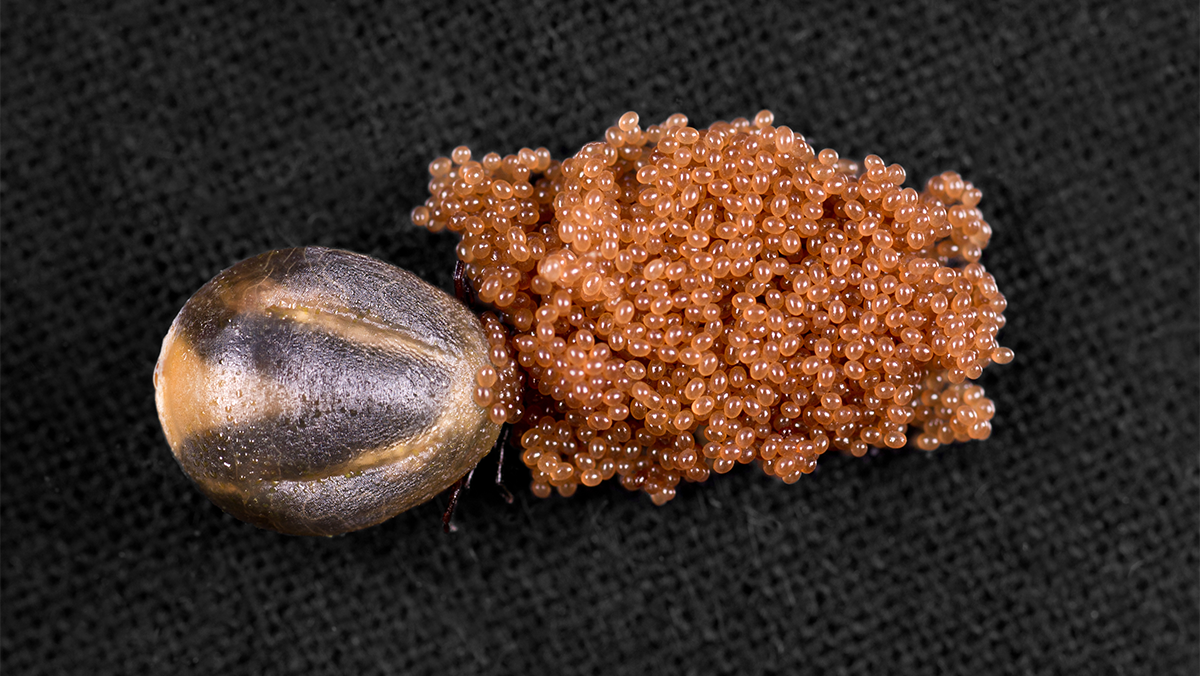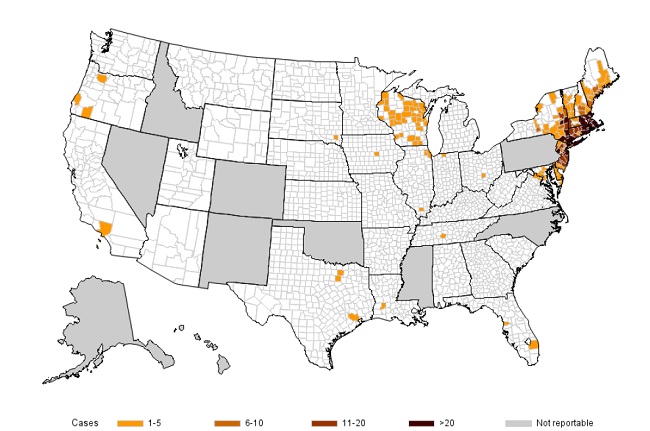Key points
- Babesiosis can be spread through the bite of the Ixodes scapularis (blacklegged or deer) tick that is carrying the parasite.
- After feeding, an adult I. scapularis female lays approximately 2,000 – 4,000 eggs.

Babesiosis Maps
2020
Number* of reported cases of babesiosis, by county of residence — 40 states, 2020†, ‡

* N = 1,826; county of residence was known for all but 1 (<1%) of the 1,827 total case-patients. See the Appendix for the maps for surveillance years 2011–2019.
† Year as reported by the health department.
‡ 2020 data may be lower or higher than previous years. COVID-19 likely had an impact on public health activities including case identification, case investigations (limited case investigations or none), as well as possibly impacting transmission rates. This may reflect the impact of isolation and prevention measures, whether people sought health care when they were ill, and other changes in behavior during the COVID-19 pandemic period.
2019
Number* of reported cases of babesiosis, by county of residence — 40 states, 2019

* N = 2,417; county of residence was known for all but 1 (<1%) of the 2,418 total case-patients. See the Appendix for the maps for surveillance years 2011–2018.
† Year as reported by the health department.
2018
Number* of reported cases of babesiosis, by county of residence — 40 states, 2018†

* N = 2,144; county of residence was known for all but 17 (1%) of the 2,161 total case-patients. See the Appendix for the maps for surveillance years 2011–2017.
† Year as reported by the health department.
Babesiosis Graphs
Number* of reported cases of babesiosis, by year, 2011–2020†

* A total of 18,294 cases of babesiosis were reported (2011, n = 1,126; 2012, n = 911; 2013, n = 1,761; 2014, n = 1,742; 2015, n = 2,074; 2016, n = 1,909; 2017, n = 2,358; 2018, n = 2,161; 2019, n = 2,418; 2020, n = 1,834).
† Year as reported by the health department.
‡ 2020 data may be lower or higher than previous years. COVID-19 likely had an impact on public health activities including case identification, case investigations, as well as possibly impacting transmission rates. This may reflect the impact of isolation and prevention measures, whether people sought health care when they were ill, and other changes in behavior during the COVID-19 pandemic period.
Number of reported cases of babesiosis, by age group* in years, 2020†,‡

* Data on age were available for most case-patients (2020, n = 1,827).
† Year as reported by the health department.
‡ 2020 data may be lower or higher than previous years. COVID-19 likely had an impact on public health activities including case identification, case investigations, as well as possibly impacting transmission rates. This may reflect the impact of isolation and prevention measures, whether people sought health care when they were ill, and other changes in behavior during the COVID-19 pandemic period.
